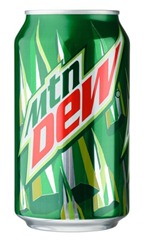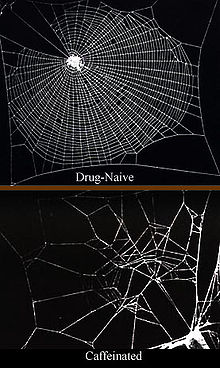
First thing I do every morning is drink a large glass of lemon water, it balances PH, keeps your skin clear and glowing, it kick starts your digestive system, helps with weight loss, and helps to control your coffee habit. Lemon is also a natural energizer, it hydrates and oxygenates the body so it feels revitalized and refreshed!
1. Boosts Your Immune System, Cures Throat Infections and Reduces Fever
Lemons are high in vitamin C, which is great for fighting colds. They’re high in potassium, which stimulates brain and nerve function. Potassium also helps control blood pressure. It is an excellent fruit that aids in fighting problems related to throat infections, sore throat and tonsillitis it has an antibacterial property. For sore throat, dilute one-half lemon juice with one-half water and gargle frequently. Lemon water can treat a person who is suffering from cold, flu or fever. It helps to break fever by increasing perspiration. My favorite is hot tea, lemon and honey such a great combination.
2. It’s Good For Your Stomach
Lemon can help relieve many digestion problems when mixed with hot water. These include nausea, heartburn and parasites. Due to the digestive qualities of lemon juice, symptoms of indigestion such as heartburn, bloating and belching are relieved. By drinking lemon juice regularly, the bowels are aided in eliminating waste more efficiently. Lemon acts as a blood purifier and as a cleansing agent. The intake of lemon juice can cure constipation. It is even known to help relieve hiccups when consumed as a juice. Lemon juice acts as a liver tonic and helps you digest your food by helping your liver produce more bile. It decreases the amount of phlegm produced by your body. It is also thought to help dissolve gallstones.
3. Superb for Skin Care
Lemon, being a natural antiseptic medicine, can participate to cure problems related to skin. Lemon is a vitamin C rich citrus fruit that enhances your beauty, by rejuvenating skin from within and thus bringing a glow on your face. Daily consumption of lemon water can make a huge difference in the appearance of your skin. It acts as an anti-aging remedy and can remove wrinkles and blackheads. Lemon water if applied on the areas of burns can fade the scars. As lemon is a cooling agent, it reduces the burning sensation on the skin.
4. Aids in Dental Care and Freshens Breath
Lemon water is used in dental care also. If fresh lemon juice is applied on the areas of toothache, it can assist in getting rid of the pain. The massages of lemon juice on gums can stop gum bleeding. It gives relief from bad smell and other problems related to gums.
5. Balances pH
Drink lemon water everyday and you’ll reduce your body’s overall acidity. Lemon is one of the most alkaline foods around. Yes, lemon has citric acid but it does not create acidity in the body once metabolized.
6. Controls High Blood Pressure
Lemon water works wonders for people having heart problem, owing to its high potassium content. It controls high blood pressure, dizziness, nausea as well as provides relaxation to mind and body. It also reduces mental stress and depression.
7. Assist in curing Respiratory Disorders
Warm lemon water helps get rid of chest infections and halt those pesky coughs, along with breathing problems and is helpful to people with asthma and allergies too.
8. Is a Diuretic
Lemon increases the rate of urination in the body, which helps purify it. Toxins are, therefore, released at a faster rate which helps keep the urinary tract healthy. It can also treat rheumatism and arthritis. It helps flush out the unwanted bacteria and toxins from of the body.
9. Keeps You Zen
Vitamin C is one of the first things depleted when you subject your mind and body to stress. Lemons are chock full of vitamin C.
10. Acts as a blood purifier
The diseases like cholera or malaria can be treated with lemon water as it can act as a blood purifier.
Bonus: Lemon water is an excellent source of anti-oxidants and vitamin C, which prevents formation of free radicals. These free radicals can cause death of the cells and rob electrons. It’s an excellent remedy for a hangover!
Fun Fact: Lemon water is as calorie-free as water, but it taste better, acts as a blood sugar stabilizer, boosts metabolism, helps with digestion, contains calcium, and can clean your skin.
What-are you waiting for? Add a wedge of lemon to your water and do it daily and reap all the benefits!
For more Google it or just click here.


 energy and provide fuel for his heats?
energy and provide fuel for his heats?
 A 150-pound hard-training athlete should have a meal four times per day with 17-20 grams of protein per meal and a larger meal containing 40 grams of protein before bedtime. Breaking the protein intake up throughout the day is a key strategy for maximizing protein synthesis.
A 150-pound hard-training athlete should have a meal four times per day with 17-20 grams of protein per meal and a larger meal containing 40 grams of protein before bedtime. Breaking the protein intake up throughout the day is a key strategy for maximizing protein synthesis.


 (Credit: Jamie Squire)
(Credit: Jamie Squire)




 BY JILL CASTLE, REGISTERED DIETITIAN AND CHILD NUTRITION EXPERT
BY JILL CASTLE, REGISTERED DIETITIAN AND CHILD NUTRITION EXPERT
 ) Open a can of your favorite broth-based soup (chicken noodle, chicken and rice, vegetable, etc.) and raid the vegetable bin in the fridge. Broccoli, green beans, baby carrots, asparagus, spinach, or whatever is in the fridge can be washed and steamed in the microwave for a few minutes and then added to soup. Top with some Parmesan cheese for a filling snack.
) Open a can of your favorite broth-based soup (chicken noodle, chicken and rice, vegetable, etc.) and raid the vegetable bin in the fridge. Broccoli, green beans, baby carrots, asparagus, spinach, or whatever is in the fridge can be washed and steamed in the microwave for a few minutes and then added to soup. Top with some Parmesan cheese for a filling snack.  ) Open a can of garbanzo beans (also known as chick peas or those round beige beans on the salad bar) and pour into a colander to drain; then rinse. Put the beans in a bowl and mash with a fork; drizzle some olive oil into the mashed beans and season with salt and pepper for a quick hummus. For the more adventurous chef, add chopped garlic or roasted red peppers. Spread hummus on crackers or use as a dip for veggies.
) Open a can of garbanzo beans (also known as chick peas or those round beige beans on the salad bar) and pour into a colander to drain; then rinse. Put the beans in a bowl and mash with a fork; drizzle some olive oil into the mashed beans and season with salt and pepper for a quick hummus. For the more adventurous chef, add chopped garlic or roasted red peppers. Spread hummus on crackers or use as a dip for veggies. a touch of pickle relish. Mix with light mayonnaise and spread on a toasted mini-bagel. Tuna is a good source of healthy omega-3-fatty acids or “fish oil.”
a touch of pickle relish. Mix with light mayonnaise and spread on a toasted mini-bagel. Tuna is a good source of healthy omega-3-fatty acids or “fish oil.”  with chopped nuts for a sweet, healthy snack.
with chopped nuts for a sweet, healthy snack.  From the American Youth Soccer Organization
From the American Youth Soccer Organization
 2) 1 cup low-fat cottage cheese with peaches, pears, or pineapple…or any fruit you like. Cottage cheese is rich the amino acid leucine which is thought to be the trigger for muscle protein synthesis. Although cottage cheese doesn’t taste salty, it has a higher sodium content than other dairy foods and this might be a good thing if you are a salty sweater (if you see white, salty streaks on your clothing or cap after it dries, you are probably a salty sweater.)
2) 1 cup low-fat cottage cheese with peaches, pears, or pineapple…or any fruit you like. Cottage cheese is rich the amino acid leucine which is thought to be the trigger for muscle protein synthesis. Although cottage cheese doesn’t taste salty, it has a higher sodium content than other dairy foods and this might be a good thing if you are a salty sweater (if you see white, salty streaks on your clothing or cap after it dries, you are probably a salty sweater.)
 4) 4 Tablespoons peanut butter and strawberry jam on wheat bread. This is an especially good recovery snack for those who are trying to gain weight. Peanut butter is higher in fat than other protein foods so means higher calories, but not to worry, the fat is the heart-healthy kind of fat.
4) 4 Tablespoons peanut butter and strawberry jam on wheat bread. This is an especially good recovery snack for those who are trying to gain weight. Peanut butter is higher in fat than other protein foods so means higher calories, but not to worry, the fat is the heart-healthy kind of fat. than regular yogurt and has a thicker consistency. Because it tastes a bit more like sour cream, sweeten it up with fruit or granola to add the carbs. Greek yogurt also makes a great topping for baked potatoes or cheese nachos as a substitute for higher-fat, lower-protein sour cream.
than regular yogurt and has a thicker consistency. Because it tastes a bit more like sour cream, sweeten it up with fruit or granola to add the carbs. Greek yogurt also makes a great topping for baked potatoes or cheese nachos as a substitute for higher-fat, lower-protein sour cream. BY JILL CASTLE, REGISTERED DIETITIAN AND CHILD NUTRITION EXPERT
BY JILL CASTLE, REGISTERED DIETITIAN AND CHILD NUTRITION EXPERT




 Y JILL CASTLE, REGISTERED DIETITIAN AND CHILD NUTRITION EXPERT
Y JILL CASTLE, REGISTERED DIETITIAN AND CHILD NUTRITION EXPERT  BY JILL CASTLE//RD AND CHILD NUTRITION EXPERT
BY JILL CASTLE//RD AND CHILD NUTRITION EXPERT